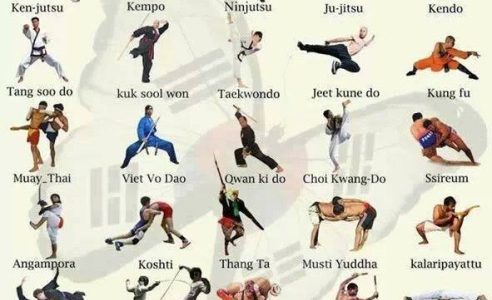The History And Evolution Of Martial Arts Worldwide
The History And Evolution Of Martial Arts Worldwide
Blog Article
Developed By-Sutton Fallon
Martial arts have a fascinating history that spans centuries and continents. You could find it fascinating how ancient practices like Shuai Jiao and Kalaripayattu laid the groundwork for modern battle strategies. These self-controls not just highlight physical skills however also show the societies that birthed them. As you discover their advancement, take into consideration exactly how globalization has actually changed these typical forms right into crossbreed styles. What impacts do you think have formed today's martial arts landscape?
Ancient Martial arts: The Foundations of Fight
As you delve into the world of old martial arts, you'll discover the abundant foundations that shaped fight methods across societies. Very early methods focused on Self-Defense and survival, frequently including strikes, hurting, and weapons.
In ancient China, for example, strategies like Shuai Jiao emphasized throws and joint locks, while India's Kalaripayattu showcased dexterity and liquid motion. Japanese samurai developed Kenjutsu, a refined swordsmanship that highlighted technique and method.
These martial arts served not just for battle yet also as a way of personal development, instilling worths like respect and willpower. The mixing of these methods gradually laid the groundwork for the diverse martial arts you see today, each reflecting the one-of-a-kind viewpoints and needs of its society.
The Social Impact on Martial Arts Development
While martial arts usually mirror the useful demands of a society, they also embody the social worths and beliefs of their origins. When you explore different martial arts, you'll discover exactly how they're affected by faith, philosophy, and social norms.
For instance, the emphasis on respect and technique in Japanese martial arts stems from Zen Buddhism and samurai culture. On the other hand, Brazilian Jiu-Jitsu promotes adaptability and approach, formed by the demand for efficiency in a varied, multicultural environment.
Learn Even more may discover that the routines, uniforms, and training methods mirror a community's background and identity. By comprehending these cultural influences, you deepen your recognition of martial arts and their role fit human experiences across the globe.
Modern Adaptations and the Globalization of Martial arts
Martial arts have transformed considerably in recent years, adjusting to modern culture and global impacts. go now 'll notice that traditional kinds have combined with modern methods, producing hybrid styles like MMA. These adaptations accommodate varied target markets, making martial arts accessible and attractive around the world.
With the rise of social media and electronic systems, you can locate tutorials and competitions from all edges of the world, breaking geographical barriers. This globalization has actually resulted in a shared recognition for different self-controls, from Brazilian Jiu-Jitsu to Taekwondo.
As you involve with these arts, you'll understand they're not nearly battle; they advertise physical fitness, technique, and mental well-being.
Inevitably, modern-day adjustments have actually improved the martial arts landscape, making it a vibrant and advancing practice.
Final thought
In checking out the history and evolution of martial arts, you reveal an interesting blend of strategies, societies, and approaches. From old self-controls like Shuai Jiao and Kalaripayattu to the contemporary flexibility seen in MMA, martial arts mirror humanity's pursuit for Self-Defense and personal growth. As you involve with these practices, you not just acquire skills however additionally a much deeper admiration for the diverse practices that shape our world today. So, continue your trip and accept the art of battle!
